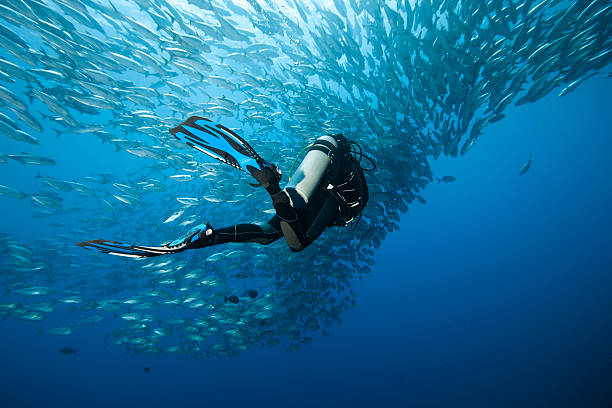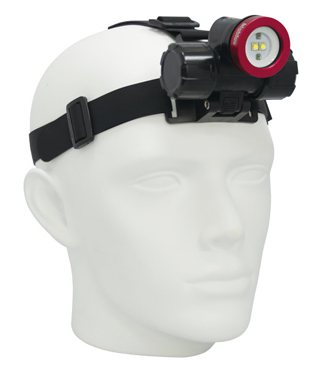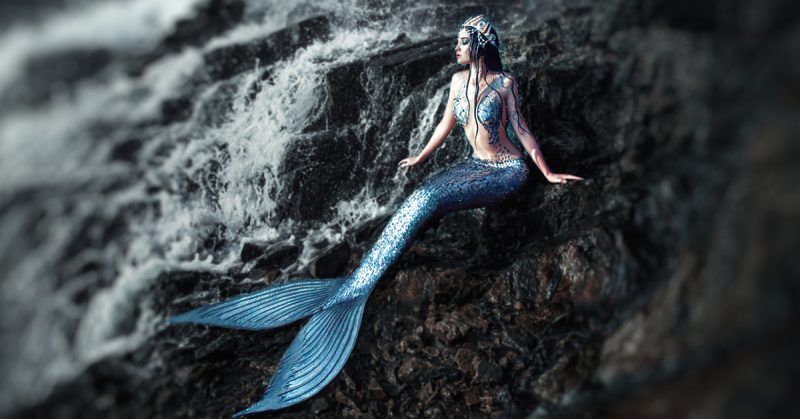Everyone has their own definition of what feels cold & what is comfortably warm, and things don’t change in the water. Scuba divers everywhere have different preferences for spending an hour or more underwater, sometimes several times per day. What makes for the right balance of cost & convenience to stay warm & comfortable?
Tropical & sub-tropical seas are defined by those which are located between the temperate zones. Water temperatures depend on currents and the time of the year, but are generally 68°-86° Fahrenheit (20°-30°C). Scuba diving in warm water is a more popular than in colder water, mainly due to the comfort of the diver both while diving and immediately afterwards. The best type of scuba diving wetsuit for tropical & sub-tropical water is a divisive topic, and depends on each diver’s preference. Some divers don’t feel the cold as much as others, and the cost and inconvenience of owning or even using a wetsuit are also factors to consider.

What does a wetsuit do?
While some people may think that a wetsuit keeps you dry, this is not true. By definition, they allow the wearer to get wet by the surrounding water. Using a clever design, wetsuits trap a thin layer of water inside which is warmed by the diver’s body heat. As long as that thin layer of water isn’t replaced by colder water, the diver will remain comfortably warm. The performance of ill-fitting and damaged wetsuits is dramatically affected. It’s important that the wetsuit is comfortably tight when dry. And any rips or holes will enable warm water to escape, to be replaced by colder water.
Which types of wetsuit are available for warm water?
Depending on where you are in the world, there is a wide selection of different wetsuit lengths and features.
- A ‘shorty’ just covers the torso, upper arms, and thighs. These are usually the cheapest to buy and least likely to be damaged while scuba diving. They’re cheaper simply because there is less neoprene material and they don’t require extra stitching or pads at the elbow & knee joints. With no elbow or knee joints, there’s also much less chance of damage when compared to long wetsuits. Shorties are the most-common type of rental wetsuit in areas where the water is warm enough all year round. This includes Similan Islands diving in Thailand.
- Long wetsuits cover the arms and legs. They often have Velcro straps and/or zippers to make a better seal at the ankles & wrists. In addition, long wetsuits usually have rubber pads on the elbows & knees, to protect them from damage caused by abrasions.
- Hooded wetsuits are most commonly long wetsuits, but there are some which are just torso & hood upper-body wetsuits. A great deal of body heat is lost through the scalp, so some divers prefer to wear a hooded wetsuit to maximise retaining body heat.
Wetsuits are available in different thicknesses
- In general, a scuba diving wetsuit for tropical & sub-tropical water will be 3mm. or 5mm. in thickness. Some different brands may use an a typical thickness, such as Cressi’s 2.8mm. range.
- Thinner wetsuits are easier to put on & remove, and less expensive to buy. But thicker wetsuits do a better job of keeping the diver warmer and for longer.
- There are wetsuits thinner than 3mm. but the product needs to be carefully designed and of high quality to ensure that it doesn’t get damaged.
- Thicker than 5mm. wetsuits are heavy, take longer to dry, and are bordering on being compared to semi-wetsuits and dry suits. There are naturally more expensive to buy, as well.
Alternatives to wearing a wetsuit
- Rashguards (also known as rash vests) are very popular with divers who don’t feel the cold as much as others, but want something comfortable to wear under their BCD that will offer a certain amount of warmth. Using new fabrics such as Koredry™, rashguards are able to do an excellent job of keeping divers comfortable while offering the best convenience and at lower costs. In addition, they’re able to be worn for activities other than scuba diving.
Owning or hiring a wetsuit for scuba diving
Owning your own wetsuit is the only choice for some divers, but it’s the last item other divers buy. Reasons for buying or not buying your own wetsuit are many and varied, but cost, convenience and personal hygiene are all factors.
- Wetsuits are not the cheapest item of scuba diving gear, but they are in contact with more of the diver’s body than any other item. Paying a little extra for higher quality or more features is also worth considering, especially if you plan to use the wetsuit for several years.
- If you’re hiring a scuba diving wetsuit from the dive centre, then you can just hand it back after your dive. In contrast, using your own wetsuit means that you need to hang it out to dry, as well as pack it into your luggage when on a diving vacation.
- Divers who have their own wetsuit are more likely to take better care of it, and many divers are repulsed at the thought of wearing something that so many others have worn before. It’s not uncommon for divers to urinate while diving, and doing so inside a wetsuit also happens from time to time.
If you’re hiring a wetsuit from a dive centre, there is often little or no choice. You’re given one in your size, and that’s the end of it. However, those looking to buy their own wetsuit should take time to think about where they will dive in the coming years, and is it convenient to take diving gear to all the proposed destinations. In addition, the style, thickness & brand are all important decisions. Choosing the best scuba diving wetsuit for tropical & sub-tropical water will ensure that you have the best compromise at all times.
Contributed by Jamie Dodson from No Troubles, Just Bubbles
Jamie Dodson is an enthusiastic fun diver, blogger and booking agent
based in Bangkok. Originally from England, he’s now married with two
daughters, who both dive as well. Jamie is actively involved in the
scuba diving business every day.







Leave A Comment